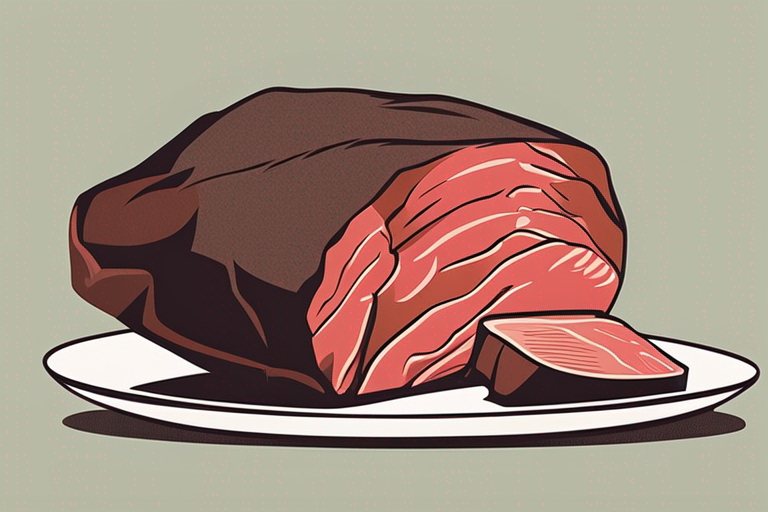
Properly Storing Bison Steak to Prevent Spoilage
Get Your Free Food Safety Cheat Sheet
30 most common foods with instant answers. Print it and stick it on your fridge—completely free!
Properly Storing Bison Steak to Prevent Spoilage
When it comes to storing bison steak, proper handling and storage practices are crucial to prevent spoilage and ensure food safety. Bison meat is a lean and nutritious protein source, but like any other meat, it requires careful handling to maintain its quality and freshness. In this guide, we will explore the best practices for storing bison steak to keep it safe for consumption. (Bison steak)
Understanding Bison Steak Storage Basics
Before delving into the specifics of storing bison steak, it's important to understand some basic principles of food safety and storage. Here are a few key points to keep in mind:
Temperature Control
Proper temperature control is essential for preserving the quality of bison steak. Refrigeration helps slow down bacterial growth and maintain the freshness of the meat. The ideal temperature for storing bison steak is between 32°F and 40°F (0°C and 4°C).
Packaging
Packaging plays a critical role in preserving the quality of bison steak. Proper packaging helps prevent contamination and exposure to air, which can lead to spoilage. Vacuum-sealed packaging or airtight containers are recommended for storing bison steak.
Storage Duration
Bison steak should be consumed within a certain timeframe to ensure freshness and safety. While the exact storage duration may vary depending on factors like temperature and packaging, it is generally recommended to consume bison steak within 3-5 days of purchase.
Best Practices for Storing Bison Steak
Now that we have covered the basics, let's explore some practical tips for properly storing bison steak to prevent spoilage:
-
Purchase High-Quality Bison Steak: Start with high-quality bison steak from a reputable source to ensure freshness and food safety.
-
Refrigerate Immediately: As soon as you bring the bison steak home, refrigerate it promptly to maintain its freshness. Do not leave the meat at room temperature for an extended period.
-
Use Proper Packaging: Transfer the bison steak to airtight containers or wrap it tightly in plastic wrap before storing it in the refrigerator. Alternatively, you can use vacuum-sealed packaging for optimal preservation.
-
Organize the Refrigerator: Store the bison steak on the bottom shelf of the refrigerator to prevent drippings from contaminating other foods. Keep the meat away from ready-to-eat items to avoid cross-contamination.
-
Check the Temperature: Regularly monitor the temperature of your refrigerator to ensure it stays within the recommended range. Investing in a refrigerator thermometer can help you maintain proper storage conditions.
-
Rotate and Label: If you have multiple packages of bison steak, use the "first in, first out" principle to ensure that older meat gets used first. Label each package with the date of purchase to track freshness.
-
Avoid Overcrowding: Do not overcrowd the refrigerator, as proper air circulation is essential for maintaining the quality of bison steak. Allow some space around the meat for optimal storage conditions.
-
Thaw Safely: When thawing frozen bison steak, do so in the refrigerator or under cold running water. Avoid thawing at room temperature to prevent bacterial growth.
Safety Precautions and Tips for Bison Steak Storage
In addition to the best practices mentioned above, here are some safety precautions and additional tips to keep in mind when storing bison steak:
- Do Not Refreeze: Once bison steak has been thawed, do not refreeze it. Consume the meat within a few days to ensure quality and safety.
- Cook Thoroughly: When cooking bison steak, ensure it reaches the recommended internal temperature to kill any harmful bacteria. Use a meat thermometer to check for doneness.
- Inspect for Spoilage: Before cooking or consuming bison steak, inspect it for any signs of spoilage, such as off smells, slimy texture, or unusual discoloration. When in doubt, discard the meat.
- Practice Good Hygiene: Wash your hands thoroughly before and after handling bison steak to prevent cross-contamination. Clean and sanitize any surfaces or utensils that come in contact with raw meat.
- Store Leftovers Properly: If you have cooked bison steak leftovers, store them in airtight containers in the refrigerator and consume them within 3-4 days.
Conclusion
Properly storing bison steak is essential for maintaining its quality, freshness, and safety. By following the best practices outlined in this guide, you can ensure that your bison steak remains delicious and safe for consumption. Remember to prioritize temperature control, packaging, and hygiene when handling and storing bison meat. With these tips in mind, you can enjoy the unique flavor and nutritional benefits of bison steak with confidence. [Learn more about bison steak here](/food/bison steak). (Bison steak)

Authoritative Food Safety References
These agencies and university labs inform every tip and health precaution we publish.
USDA FoodKeeper – Cold Storage Guidelines
Official refrigerator, freezer, and pantry timelines maintained by the U.S. Department of Agriculture.
Visit USDA FoodKeeperFDA Produce Safety Rule & Grower Guidance
Field-to-fridge handling practices that prevent contamination of fruits, vegetables, and leafy greens.
Visit FDA Produce SafetyCDC Foodborne Illness Prevention Hub
Surveillance-backed guidance on pathogens, symptoms, and steps to reduce foodborne illness risk.
Visit CDC Food SafetyUC Davis Postharvest Technology Center
University research detailing optimal storage atmospheres for produce after harvest.
Visit UC Davis PostharvestPenn State Extension – Home Food Preservation & Safety
Peer-reviewed extension bulletins on safe canning, chilling, and reheating practices.
Visit Penn State ExtensionCan I freeze bison steak to extend its shelf life?
How can I tell if bison steak has gone bad?
Can I marinate bison steak before storing it in the refrigerator?
Is it safe to reheat leftover bison steak?
Get Your Free Food Safety Cheat Sheet
30 most common foods with instant answers. Print it and stick it on your fridge—completely free! Want more? Upgrade to the complete guide with 70+ foods.
Scan your food directly and get instant safety info using our AI-powered camera feature.